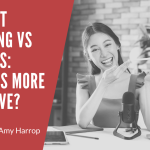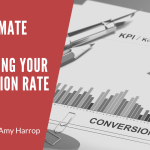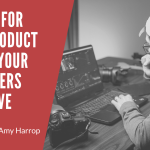 You can create streams of income selling one product at a time. But is that necessarily the best way to build an online business?
You can create streams of income selling one product at a time. But is that necessarily the best way to build an online business?
If you’re not already doing it, I highly recommend product bundling as a way of increasing the average size of your sales and your profits. The trick, of course, is understanding what product bundling is, why it works, and how to do it effectively. I’ll cover all of that in this post.
What is Product Bundling?
Let’s start with the basics. Product bundling is the process of grouping two or more products together to sell. If you’ve ever bought a skin care set or a craft kit, you have purchased a product bundle.
The goal of a product bundle is to make the purchasing process easy for the customer and — of course — to increase your profits. It is common to offer the bundle at a price that is discounted from the total individual prices of the products that are included.
Why Does Product Bundling Work?
There are several reasons that product bundles work as a way of increasing sales and profits. Let’s run through them.
First, product bundles offer convenience. If someone comes to your Etsy shop looking for items to plan their child’s birthday party, it’s more convenient to buy a single bundle that includes party invitations, decorations, name tags, and bags for party favors than it is to look for and purchase those products one at a time.
Second, product bundles offer value. As I said above, it’s common for sellers to price product bundles at a discount. If you’re selling a range of wedding planner supplies that normally retail for $50, bundling them together at $45 offers potential customers an easy way to see the value of the bundle.
Third, product bundles can help you increase awareness of new products and products that may not be bestsellers yet. I especially like them when I’m introducing a new line of products. For example, an Etsy printable shop that was already selling flashcards for kids might add a line of worksheets and entice people to buy them by bundling them with the flashcards.
In other words, there’s a psychology to product bundling. A bundle has the benefit of being convenient, valuable, and exciting — all things that can turn a casual browser into a dedicated customer.
How to Choose Products to Bundle
One of the things that will determine the success of your product bundles is choosing the right products to include in the bundle. There are a few strategies that I suggest.
- Review your analytics to determine which products are commonly bought together. If you already know that your customers are buying two products together, creating a bundle with them is a no-brainer.
- Bundle products that can be used together. You know your products better than anybody else does, so you probably have some great ideas about how they can work together. Keep in mind that you may want to include suggestions for how to use the bundled products if it’s not obvious.
- Keep convenience in mind. One of the things that can prevent a customer from buying your products is an overly complicated buying process. When you bundle products that are commonly purchased together or commonly used together, you provide your customers with a quick and easy way to get what they need.
You should always bundle products with your customers’ needs and preferences in mind.
Tips for Effective Product Bundling
Product bundles can easily become bestsellers if you handle them properly. Here are some tips and ideas to help you bundle your products in a way that’s appealing.
- Create bundles with utility in mind. Something that’s useful to your customers is far more likely to sell than a bundle of unrelated products.
- Come up with compelling and snappy names for your bundles. Don’t just call it a “Pirate Party Bundle.” Try the “X Marks the Spot Hidden Treasure Pirate Party Bundle” or something of that nature. The name of the product is a big part of its appeal!
- Test different combinations of products to see which bundles perform best. You may discover that your customers are more likely to buy small bundles of two or three products than they are large ones with six or seven products — or vice versa. Using A/B testing on your ads can help you collect data and determine which bundles are best suited to your audience.
- Price your bundles attractively. There’s no hard-and-fast rule to bundle pricing, but the most important thing you need to do is give people a reason to buy the bundle. I suggest adding up the retail prices of all the products in the bundle and then discounting that total by at least 5% for the bundle as a whole. For example, if you had $20 worth of products, you might sell the bundle for $19 (a 5% discount) or $18 (a 10% discount) to make it clear that your customers will be getting a bargain if they buy your bundle.
- Consider adding a “bundle only” product that may entice customers who are on the fence to buy your bundle. These products don’t need to be expensive. For example, you could include a checklist or cheat sheet to help people use the products in the bundle or an inexpensive add-on that will enhance the products in the bundle.
- Create seasonal bundles. If you’re selling on Etsy, then I strongly recommend creating seasonal bundles. For example, Christmas card supplies and decorations can be bundled in November and December. Graduation products are going to be most popular in May and June. You should be bundling products and offering them at the times when customers are most likely to buy them.
I hope you get the idea. Your bundles should all be created with your customers in mind. In the end, you’re selling emotions such as convenience, stress-relief, and happiness as much as you are the products in the bundle itself. By highlighting these emotions in your product listings, you can help people to see the value in your bundles.
Do you need help creating multiple income streams? Click here to learn how you can work with me directly!



